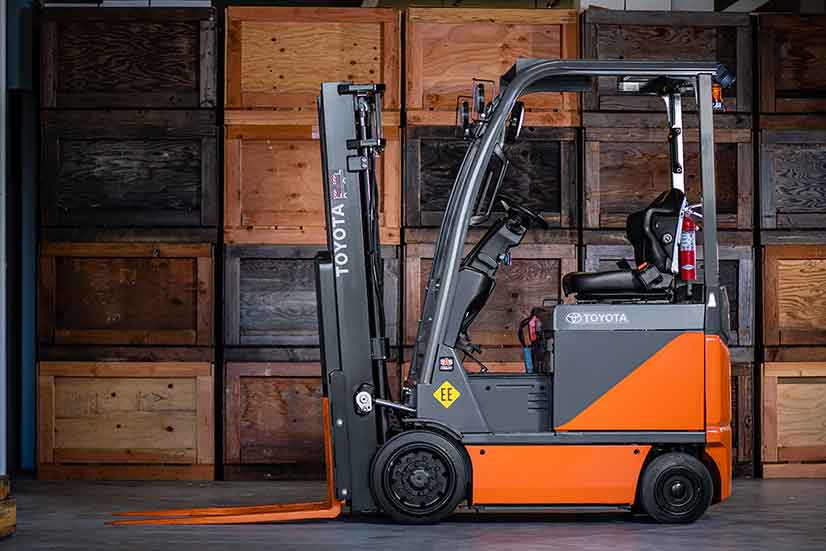Electric forklifts have become an essential part of modern material handling operations, offering businesses an eco-friendly and cost-effective alternative to internal combustion forklifts. This guide answers the most frequently asked questions about electric forklifts, covering their benefits, maintenance, costs, and more.
What Are the Advantages of Electric Forklifts?
Electric forklifts offer several benefits, including:
- Zero Emissions: They produce no harmful exhaust, making them ideal for indoor and environmentally sensitive areas.
- Lower Operating Costs: Electricity is cheaper than fuel, and electric forklifts require less maintenance.
- Quieter Operation: Reduced noise levels improve workplace safety and communication.
- Regenerative Braking: This feature extends battery life and reduces wear on braking components.
- Government Incentives: Many regions offer subsidies or tax credits for businesses switching to electric forklifts.
How Do Electric Forklifts Compare to Diesel and LPG Forklifts?
- Operational Costs: Electric forklifts have lower fuel and maintenance costs than diesel or LPG models.
- Indoor Use: Unlike diesel forklifts, electric forklifts are suitable for indoor environments due to their zero emissions.
- Power and Performance: Advances in battery technology allow electric forklifts to match the power of internal combustion models in many applications.
- Initial Investment: While electric forklifts may have a higher upfront cost, their total cost of ownership is typically lower over time.
What Types of Batteries Do Electric Forklifts Use?
Electric forklifts commonly use one of the following battery types:
- Lead-Acid Batteries: Affordable but require regular maintenance, including watering and equalization charging.
- Lithium-Ion Batteries: More expensive upfront but provide faster charging, longer lifespan, and zero maintenance.
How Long Does an Electric Forklift Battery Last?
The lifespan of an electric forklift battery depends on its type and usage:
- Lead-Acid Batteries: Typically last 1,500 to 2,000 charge cycles.
- Lithium-Ion Batteries: Can last over 3,000 charge cycles with minimal degradation.
What Are Best Practices for Maintaining Electric Forklifts?
To maximize efficiency and lifespan, follow these maintenance tips:
- Proper Charging: Avoid opportunity charging for lead-acid batteries unless specifically designed for it.
- Regular Inspections: Check battery connections, tires, and brakes for wear and tear.
- Clean Work Environment: Keep charging stations free of dust and moisture to prevent damage.
- Battery Handling Safety: Train employees on safe battery handling procedures to prevent accidents.
What Is the Total Cost of Ownership for Electric Forklifts?
The total cost of ownership (TCO) includes:
- Initial Purchase Price: Higher than internal combustion models but offset by lower operational costs.
- Energy Costs: Electricity is significantly cheaper than diesel or LPG.
- Maintenance Costs: Fewer moving parts result in lower maintenance expenses.
- Resale Value: Electric forklifts generally retain value well, particularly with lithium-ion technology.
What Charging Infrastructure Is Needed for Electric Forklifts?
- Dedicated Charging Stations: Ensure the facility has proper charging areas with ventilation (for lead-acid batteries).
- Fast Charging Options: Lithium-ion batteries allow for rapid charging, reducing downtime.
- Multiple Charging Ports: For large fleets, investing in multiple chargers improves efficiency and workflow.
Are There Any Government Incentives for Electric Forklift Adoption?
Many regions provide incentives such as:
- Tax Credits: Businesses may qualify for tax deductions when purchasing electric forklifts.
- Grants and Rebates: Some government programs offer financial assistance to support electrification.
- Carbon Reduction Initiatives: Companies investing in electric fleets may benefit from carbon credit programs.
How Do Electric Forklifts Enhance Workplace Safety?
- Lower Noise Levels: Reduces auditory distractions and improves communication.
- No Fuel Storage Risks: Eliminates hazards associated with diesel and LPG storage.
- Stable Design: Lower center of gravity improves stability, reducing the risk of tip-overs.
Can Electric Forklifts Be Equipped with Telematics for Fleet Management?
Yes, most electric forklifts can be integrated with telematics systems to enhance fleet management, optimize operations, and improve overall efficiency. Telematics technology allows businesses to monitor key performance metrics, track real-time vehicle locations, and gain insights into forklift usage patterns.
Electric forklifts provide a reliable, cost-effective, and environmentally friendly solution for material handling operations. By understanding their benefits, maintenance requirements, and long-term cost savings, businesses can make informed decisions about transitioning to electric forklifts.
For more information on choosing the right electric forklift for your business, contact our forklift dealership serving the greater Los Angeles area today.


